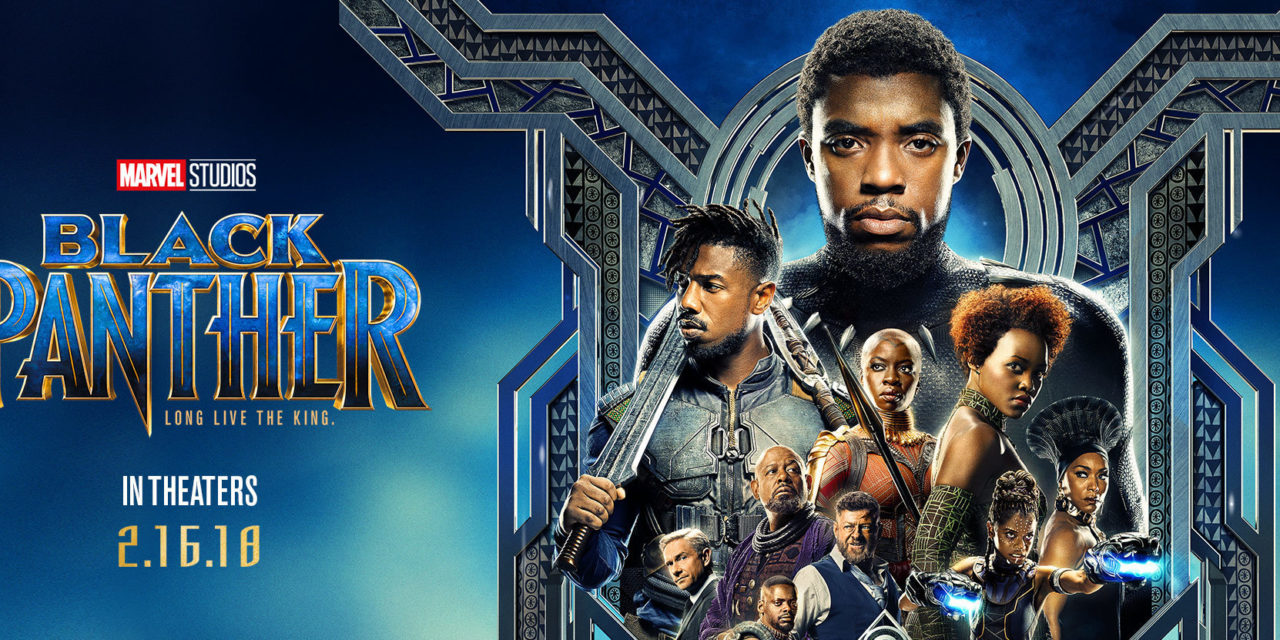by Bob Garver
We were first introduced to T’challa aka Black Panther (Chadwick Boseman) two years ago in “Captain America: Civil War.” A prince from the fictional African country of Wakanda, T’challa ascended to the throne when father the king was killed during a peace conference. His thirst for revenge led to the apparent creation of the Black Panther persona, and though he was certainly gifted athletically, it looked as though his “powers” were mostly royalty-based, similar to how his MCU colleague Tony Stark’s “powers” are mostly money-based.
It turns out there’s much more to Black Panther’s arsenal than money and power. For starters, T’challa is not the first Black Panther. Whoever is king of Wakanda wears a ring that gives them enhanced athletic abilities, and kings have used these abilities throughout history to defend Wakanda. It’s just that Wakanda hasn’t needed much defending because it keeps itself hidden from the rest of the world. Behind the smokescreen of a third-world African nation lies a bustling metropolis more technologically advanced than any country on Earth. It is home to a literal mountain of an element called Vibranium, which is extremely valuable and has tons of scientific applications (read: superhero gadgets). Some Wakandans believe that the Vibranium should be shared with the rest of the world to make it a better place, while others believe that revealing the Vibranium to the rest of the world will make Wakanda vulnerable to conquest and enslavement. It’s a thorny issue, and T’challa himself doesn’t know exactly how to feel about it.
Less conflicted are bad guys Ulysses Klaue (Andy Serkis) and Erik Killmonger (Michael B. Jordan). Klaue is a rare non-Wakandan who knows about the Vibranium and wants to use it to get rich. He stole a half-ton of the element thirty years ago in a deadly heist orchestrated by the king’s turncoat brother (Sterling K. Brown), but now wants control of the mother lode. Killmonger is a little less selfish, as he wants to use the Vibranium to help the entire Wakandan culture take over the world. Okay, he’s actually really selfish, because he has a claim to the Wakandan throne and he wants Wakanda to take over the world with him at its head, but he mentions briefly that he’s doing it on behalf of oppressed people, so he has delusions of selflessness.
More than anything that actually happens in the story, I just liked spending time in Wakanda. The “Thor” movies kept pushing Asgard as a sort of utopia, but I never saw the general population as more than servants and soldiers who didn’t seem particularly happy with their lot in life. Here, the community is thriving. Scientific advancements are being made, people look happy in their daily lives, and demeanors are friendly. I got more laughs out of the mere banter among T’challa, his sister (Letitia Wright), his girlfriend (Lupita Nyong’o), his bodyguard (Danai Gurina), his best friend (Daniel Kaluuya), a guest from America (Martin Freeman), and even an enemy (Winston Duke) than I did from the many forced gags in “Thor: Ragnarok.”
But speaking of “Thor: Ragnarok,” did “Black Panther” have to follow its story so closely? The hero learns that his father wasn’t the flawless figure he idolized, and a long-lost relative shows up to usurp the throne, forcing him to spend the rest of the movie getting it back. Did Marvel not realize that these movies were too similar to release just three months apart? Add to that some unconvincing green-screening and Killmonger’s torso clearly being made out of foam (he scars himself whenever he kills someone, to the point where he has more dimples than a golf ball), and you’ve got a noticeably flawed superhero movie. Fortunately, it makes up for its faults in other areas, like a strong, likeable ensemble, a compelling central debate, and a better arc for its villain. I don’t see “Black Panther” as the game-changer that some critics are proclaiming it to be, but it’s a fine, serviceable MCU entry.
Grade: B-
“Black Panther” is rated PG-13 for prolonged sequences of action violence, and a brief rude gesture. Its running time is 134 minutes.
Contact Bob Garver at rrg251@nyu.edu.





